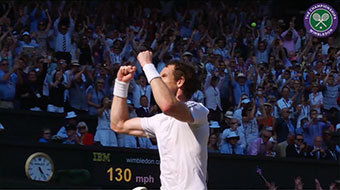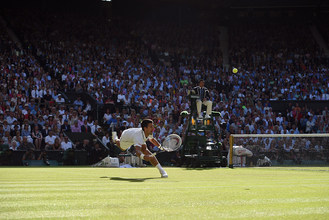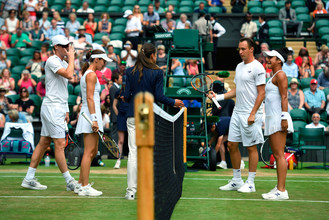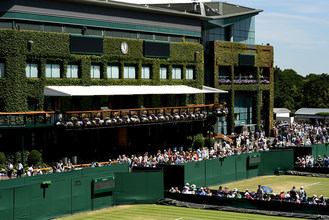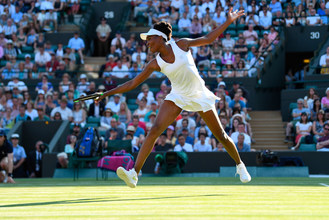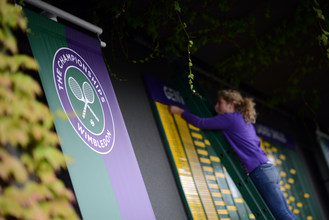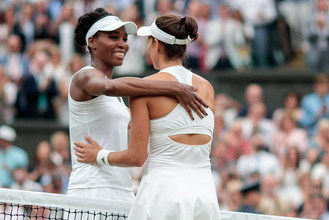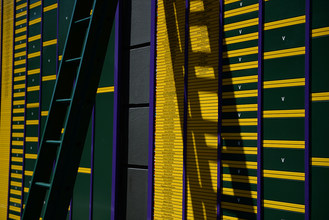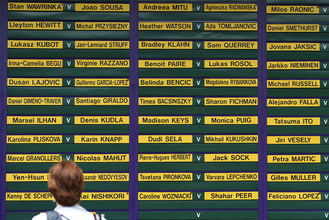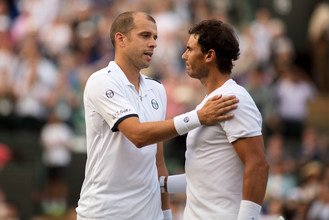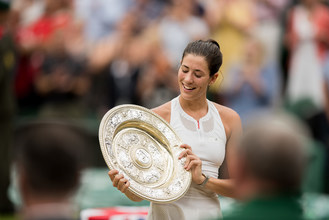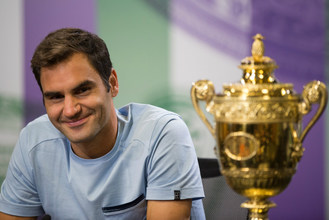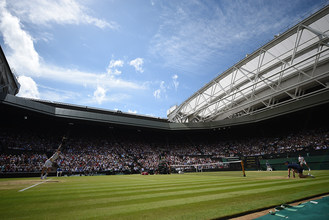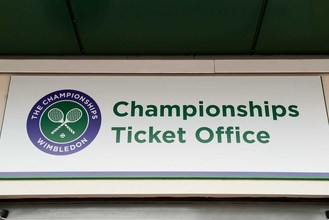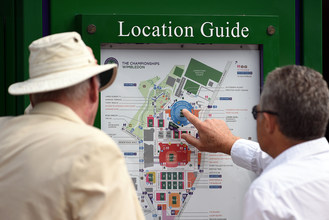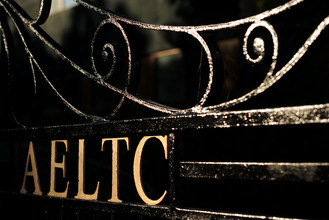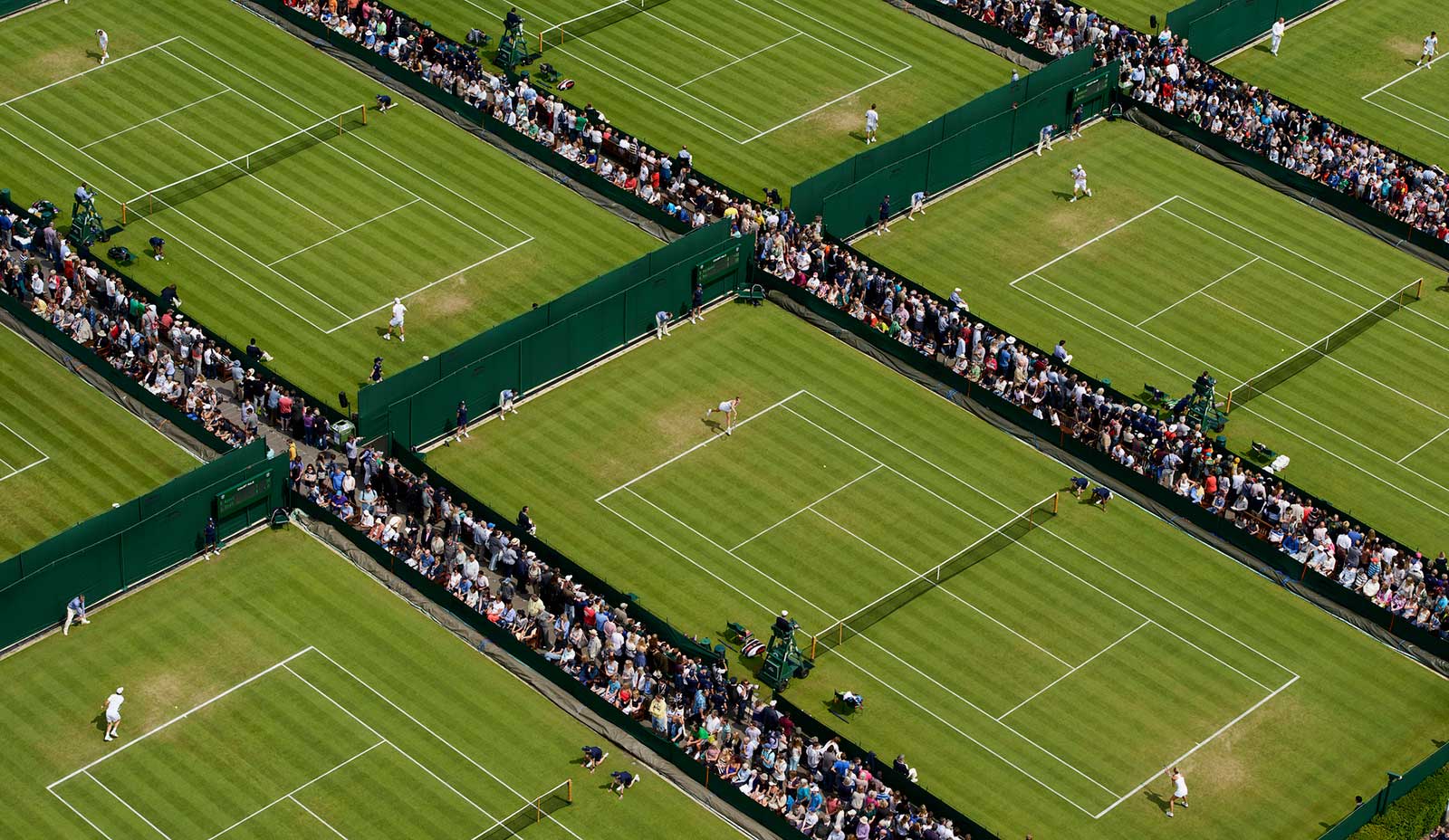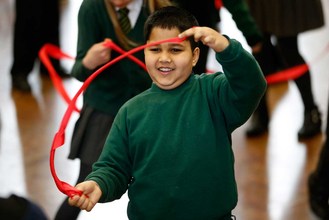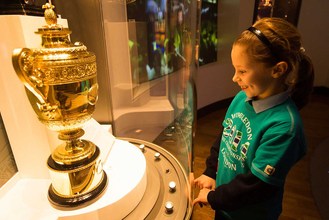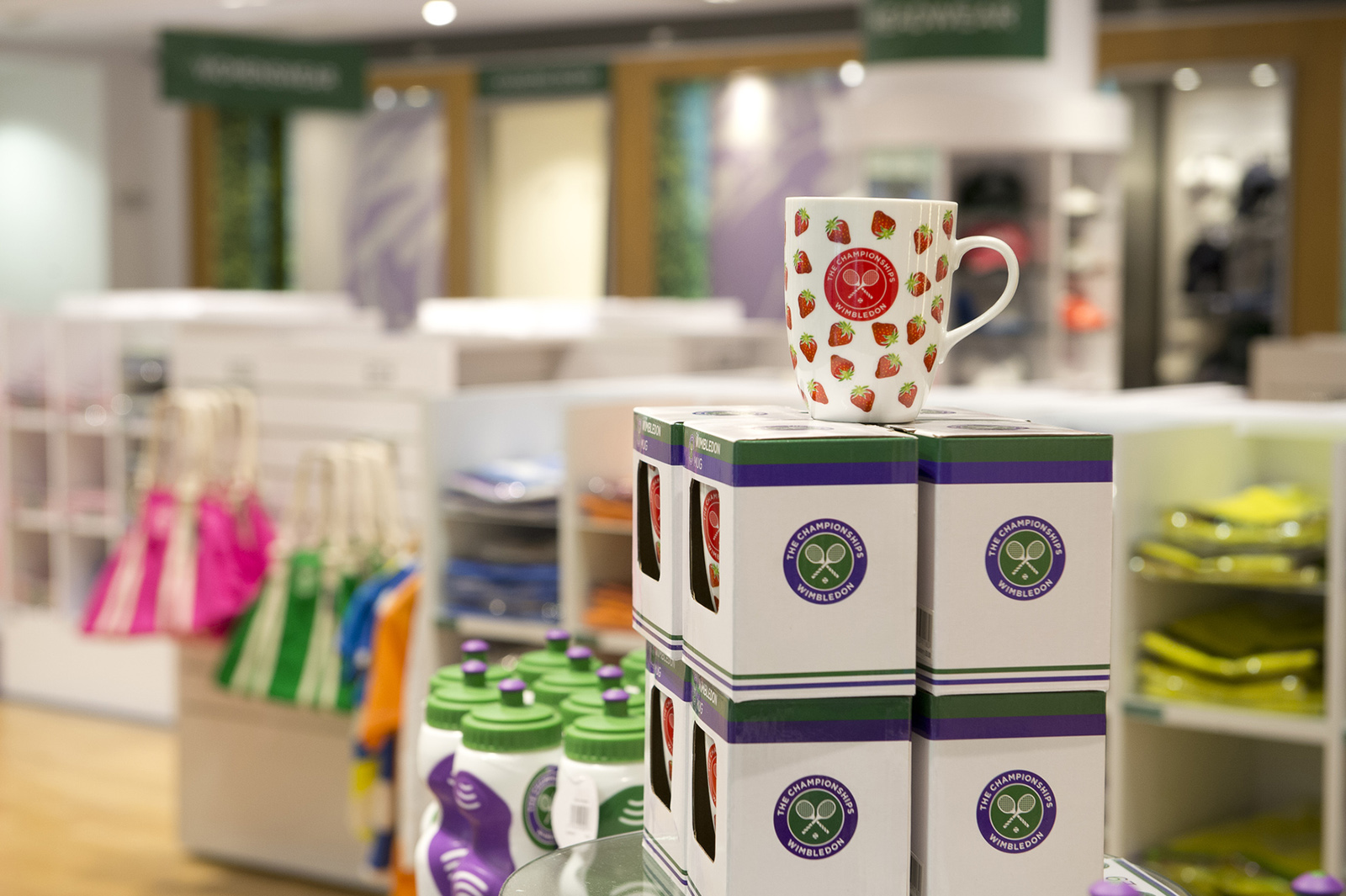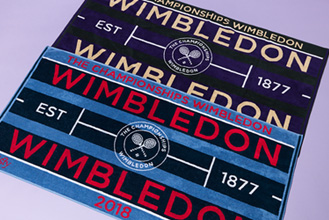1970: Margaret Court v Billie Jean King:
Margaret Court and Billie Jean King contested one of the great Wimbledon finals in 1970. As veteran commentator John Barrett has said, "It produced one of the most dramatic finals ever seen at Wimbledon." The fact it was televised in colour rather than black and white added to the spectacle while also underlining the changing times of a sport that only two years earlier had turned professional.
1970: John Newcombe v Ken Rosewall:
John Newcombe defeated his Australian countryman Ken Rosewall and a partisan crowd 5-7, 6-3, 6-2, 3-6, 6-1 to win the men’s singles for a second time.
From the start the elegant Rosewall, the underdog, had the Centre Court crowd behind for everyone hoped that this, his third appearance in a final, would be his year having previously been the gallant runner-up in 1954 and 1956. The 16-year gap set a record-breaking span between his first and this year’s final, one that was so appreciated by the crowd that it led Newcombe to ask ‘why do they hate me?’
With a nine-year age gap between the two, it was always going to be difficult for the 35-year-old Rosewall to outlast the younger former champion and his play proved patchy as Newcombe exploited his weaknesses with his power and guile to level and take a two-sets-to-one lead.
Rosewall recovered in the fourth, helped by Newcombe’s brief loss of concentration and the clear favouritism being shown to the older player, but regained his composure to inflict a quick coup de grace over his tiring compatriot in the fifth.
1971: Evonne Goolagong v Margaret Court:
The highlight of the Ladies’ singles was the final clash between Margaret Court and Evonne Goolagong, an all-Australian encounter, which will be perceived as the end of one era and the start of another.
Goolagong, at 19, had captured the tennis world’s hearts on her second appearance at The Championships with her breezy, easy-going style and sunny smile, which contrasted greatly with the quiet and dignified defending champion Court. While the Aussie teenager arrived in the final having taken out the previous year’s runner-up, Billie Jean King, in three sets, no one expected her to also get the better of the big-hitting defending champion.
The die was cast from the opening exchanges as Court surprisingly, showed more nerves than her challenger who immediately raced to a 4-0 lead with ultimate ease. However, Court drew on her experience and clawed her way back to 3-4 but in the eighth game, with Goolagong 15-40 down, she was unable to capitalise and level as the teenager struck three searing winners to completely deflate the champion.
Goolagong showed no anxiety in her free-flowing shots to claim six successive games and take the title 6-4 6-1 to become only the fourth teenager to win the women’s singles since the war.
1971: Ken Rosewall:
Classic or epic matches are measured by the numbers watching a struggle to the death and the Ken Rosewall v Cliff Ritchie clash at the quarter-final stage of the 1971 Championships falls firmly into that category.
Australia’s Rosewall and Ritchie of the US battled it out for 3hrs 59mins before Rosewall captured the semi-final place at stake, 6-8, 5-7, 6-4, 9-7, 7-5, recovering from two sets down and trailing 2-4 and 0-30 in the third.
As the scoreline suggests, Richie the hustler from America, had the match well in hand but failed to maintain his supremacy as Rosewall’s doggedness started to pay dividends. From a near hopeless position, Rosewall levelled and went on to score an excellent victory with one of his trademark backhands, passing an attacking Ritchie attempting to stave off a fifth match point. While the victory was popular, the crowd rose in appreciation to acclaim both protagonists’ efforts.
1972: Stan Smith v Ilie Nastase
Rain, the first of the fortnight, washed out Saturday play and for the first time in the history of The Championships, the men’s final was played out on the Sunday to the dismay of traditionalists.
Stan Smith, the tall upright American and top seed, faced the crowd’s favourite, Ilie Nastase, the Romanian court jester seeded second, and between them, they entertained the crowd with a classic final.
Having made his last racket change in the fourth game of the fourth set, Nastase became hyper matching Smith stroke for stroke from the back of the court, dominating the net and showing remarkable determination to level the match.
In the decider both players defended stoutly to prevent their opponent to capitalise on their chances but in the 12th game, Smith forced his challenger to net a high backhand volley and concede the final after 164 minutes, 4-6, 6-3, 6-3, 4-6, 7-5 on his fourth match point in what proved to be the closest final since 1933 when Jack Crawford (Aus) beat the title-holder Ellsworth Vines (USA).
1973: The Strike
In Britain strikes had always been industrial disputes - until 1973, that is, when most of the men's field at Wimbledon withdrew their labour in the most sensational move in the history of The Championships.
As with most disputes, it concerned who was top dog. And in this respect Wimbledon was caught in the middle of a confrontation between the then International Lawn Tennis Federation (now ITF) and the newly-formed players "union", the Association of Tennis Professionals (ATP).
There had already been some flexing of muscles over who ran what, and further turmoil broke out over the Yugoslav number one, Nikki Pilic. He was suspended by his national association, who alleged he had refused to play in a Davis Cup tie. The suspension, supported by the ILTF, meant that Pilic would not be permitted to play at Wimbledon.
Ultimately 79 players, including 13 of the original 16 seeds, withdrew. The final was an anti-climax as Czech Jan Kodes, already twice a winner of the French Open, swept aside Alex Metreveli, the first Russian to reach a Wimbledon Gentlemen's final, 6-1, 9-8, 6-3. The drama was over. And so was the strike.
1974: Jimmy Connors and Chris Evert
There were two factors in particular which were unique about the 1974 Championships. The titles were won by an engaged couple, Jimmy Connors and Chris Evert, both of the United States, and in playing terms they attracted particular attention because both were double-fisted on the backhand side.
In the end, the opponent Connors had to worry about was the 39-year-old Australian, Ken Rosewall, who stunned the field and captivated the crowd by reaching the final for the fourth time - and 20 years after his first appearance in the final. There was little doubt that the sentiments of the crowd at the final swung towards Rosewall who, clearly, had earned his last chance of winning the title. But Connors raced through to title 6-1, 6-1, 6-4 against an opponent who was obviously tired after the rigours of the previous two rounds.
Chris Evert had already been a semi-finalist at her first Wimbledon in 1972, losing to Evonne Goolagong and a finalist in 1973, losing to Billie Jean King. She was due to play them in sequence in 1974 but both were beaten in earlier matches. Evert had never lost to Russian Olga Morozova so went into the final full of confidence. She won the title for the first time with victory by 6-0, 6-4.
The bookmakers had quoted odds of 33-1 on a "love double" for the engaged couple. In the end, Connors and Evert did not marry.
1975: Arthur Ashe wins Wimbledon
The 1975 Gentlemen's final pitted the brash, abrasive and sometimes uncouth defending champion and No.1 seed, Jimmy Connors, against Arthur Ashe, seeded sixth and tennis's ultimate gentleman. It proved to be one of Wimbledon's greatest finals.
Ashe hooked his serve wide to the two-handed backhand of his left-handed opponent and he took pace off his pounding, often error-producing ground-strokes. More importantly, Ashe exploited Connors' weakness - the low forehand. Time and again he caressed a shot that forced Connors to dig a reply out of the turf.
Ashe did not just create the game plan, he stuck to it superbly, winning the first two sets 6-1, 6-1. Connors, a player renowned for his never-say-die attitude was not prepared to give his title up easily and took the third set, 7-5.
The fourth set found Connors with an early break-up 3-0 before Ashe won six of the next seven games to take the final set 6-4 and become the first black male to win the Gentlemen's Singles Championship at Wimbledon.
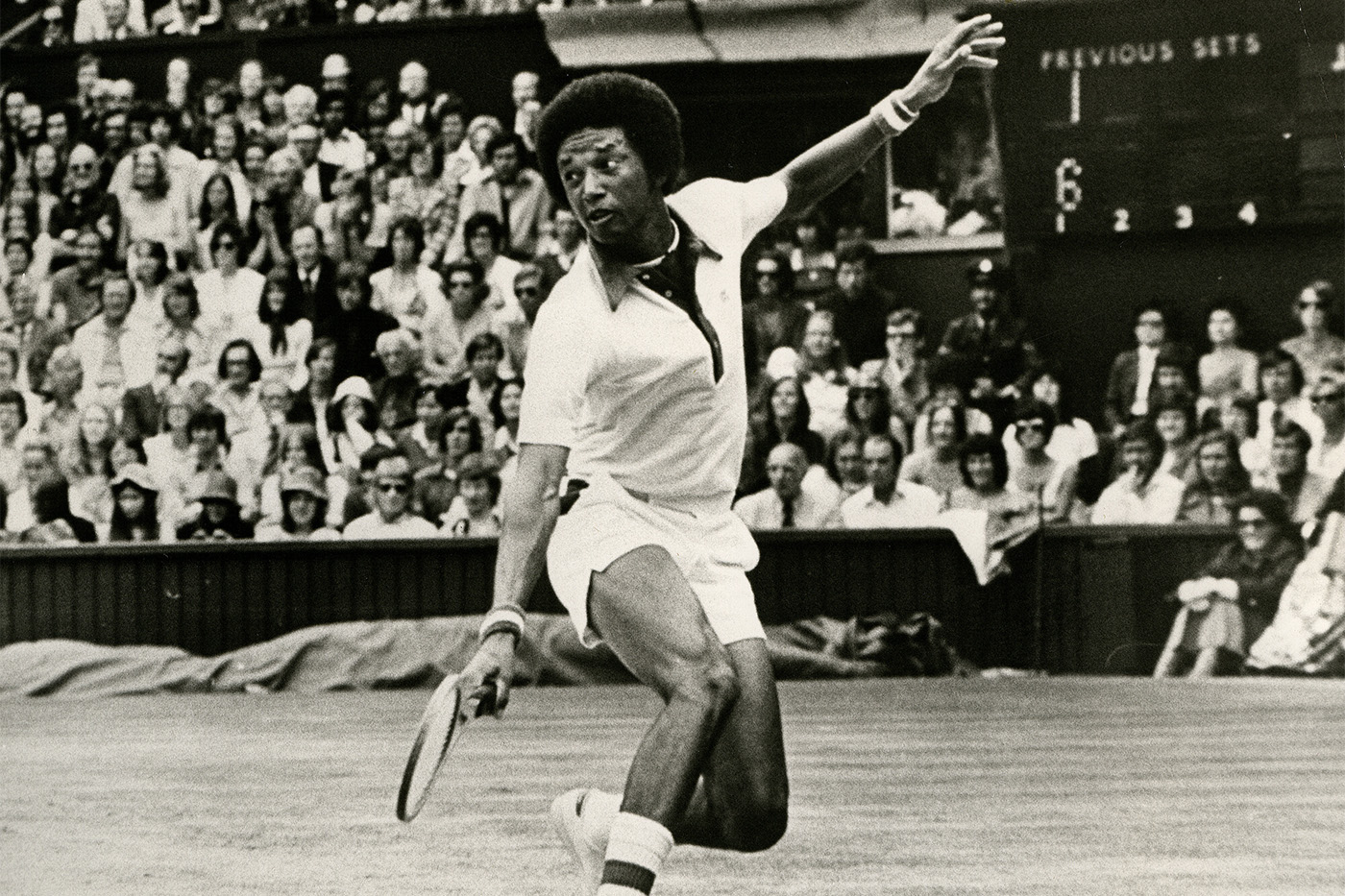
1976: Bjorn Borg v Ilie Nastase:
At 20 years and 17 days, Bjorn Borg, became the third youngest men’s singles champion and the youngest since 1931 in what was also the first all-European final since 1936 when Fred Perry beat Gottfried von Cramm. Despite nursing a slight stomach muscle strain, Borg, the fourth seed, required just 1hr and 50mins to dispatch Ilie Nastase 6-4 6-2 9-7 in what was a one-sided contest on a sultry day in SW19.
The ever popular Nastase, the third seed and title favourite, arrived in the final having brushed aside all opposition without the loss of a set only to run into a player on the verge of making tennis history.
Borg’s ferociously struck top-spin forehands successfully blunted Nastase’s attacking game, as did the Swede’s speed about the court and his defensive play, which left few opportunities for the 29-year-old to prevent defeat in the final for a second time in five years.
Having saved a match point in the 10th game, Nastase took a 6-5 lead only to be frustrated yet again by some weak play on his part, thus allowing Borg to raise the golden trophy for the first time in his blossoming career.
1976: The rise of Chris Evert:
Fittingly the 1976 Women’s Singles final saw the year’s best two players facing each other, namely from America, the determined, technically sound and gifted Chris Evert against Australia’s athletic, naturally talented and graceful stroke player, Evonne Goolagong Cawley.
In what had been a scorching fortnight, the favourite for the crown was the popular Cawley but on the day the greater determination of the ice-maiden Evert proved too much for the more laidback approach of the Australian.
From the beginning Evert looked to have the edge but with the final level at a set-all and Cawley leading 2-0, the pendulum looked to have swung her way, but Evert broke back and slowly regained the initiative by breaking up her opponent’s game and coming to the net, much to Cawley’s surprise.
The accuracy of her passing shots also took their toll and after just over two hours of competitive play, the American claimed her second Wimbledon singles crown, 6-3, 4-6, 8-6, leaving the Australian to rue missed opportunities and accept the runners-up spot for a second consecutive year.
1977: Virginia Wade:
Although Virginia Wade had won the US Open in 1968, the Australian Open in 1972 and was twice a Wimbledon semi-finalist in 1974 and 1976, the consensus was that she was past her peak and at 31, far older than exciting new talents such as America's Chris Evert, Martina Navratilova (then of Czechoslavakia, later USA) and Britain's Sue Barker.
However, Wade's victory couldn't have been scripted any better. Wade was a British player winning the Ladies' Championship in Wimbledon's centenary year, in front of the Queen during her Silver Jubilee year in 1977. As Wade stood alongside the Queen, clutching the Venus Rosewater Dish she was at the epicentre of one of Britain's greatest sporting moments.
Wade later said: "The atmosphere was phenomenal. I've never experienced anything like that in England other than football's 1966 World Cup. The place went absolutely crazy. It was a cauldron of excitement and celebration. It was humbling in a way. You immersed yourself in it and then you realised the reason for it was because you'd won. I had become a part of a major celebration."
Although her final victory against Betty Stove (Netherlands) 4-6 6-3 6-1 ensured Wade the coveted crown, she picked out her semi-final win over defending champion Chris Evert as the high point of that Championships.
1977: The Wimbledon Lawn Tennis Museum:
Over the years Wimbledon has been good at marking occasions and there was no better way to celebrate 100 years of tennis than opening a Museum on its grounds during the Club’s Centenary celebrations.
The Wimbledon Museum and its associated Lord Ritchie Library, was officially opened on 20th May, 1977 by HRH, The Duke of Kent, and over the years, has become a major London tourist attraction in its own right.
From the outset, the Wimbledon Museum was determined to cover all aspects of tennis from its origins, through all the developments to the present day and as far as possible, the future. In addition, special exhibitions highlighting specific areas like ‘tennis fashion through the ages’, were organised to provide additional visitor attractions.
The Museum, originally situated above the old debenture holders restaurant, was designed by Robin Wade and provided a stark contrast to the fustian image of other ‘museums’ to quickly become a must visit for tennis enthusiasts.
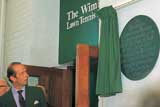
1977: Bjorn Borg v Vitas Gerulaitis: Once in a while a tennis match will reach its climax with both players utterly convinced they are going to win until the last stroke of the rally. Such was the case when Bjorn Borg met Vitas Gerulaitis in the Wimbledon semi-finals in 1977.
The pair, great friends, practice partners, both possessing blond flowing locks, although Gerulaitis didn't have the beard, sparred over five thrilling sets as Gerulaitis twice came back from a set down. Missing a match point as he scuppered a simple backhand down the line, he eventually went down 6-8 in the fifth set in the Centre Court twilight. "I'm surprised I had it in me to play that well, and I'm completely choked I lost," Gerulaitis said afterwards.
Borg went on to win the match and claim the second of his five Wimbledon titles against Jimmy Connors in the final.
1977: Bjorn Borg v Jimmy Connors: The Bjorn Borg-Jimmy Connors final in the Centenary Year of The Championships provided a more than suitable climax to what had been a somewhat controversial start to the celebrations.
That final saw the two champions remorselessly battling it out, on fast grass, from the back of the court in what in hindsight, could be deemed the start of the baseline era.
It was the first time these two great champions had met on grass with Borg pulling ahead to lead two sets to one by deploying less spin, hitting flatter deliveries and mixing in a series of nothing balls. But the Viking’s iron concentration wavered and the American came storming back to force a decider.
Crucially, Connors raised his own game to draw level at 4-all in the fifth set but a double fault at 15-love, only his second of the match, proved pivotal for he then failed to win another point as a weary Borg closed the match out 3-6 6-2 6-1 5-7 6-4 after three hours and 14 minutes of gruelling play.
1977: John McEnroe v Jimmy Connors: John McEnroe has often said that he did not choose tennis as his pursuit. Tennis found him. And that moment, when he shot on to the scene as a pale, unathletic looking 18-year-old in Wimbledon 1977, was the turning point.
Runner-up at the 18&U national junior championships, and ranked No.270 in the world, he earned the chance to play the Wimbledon qualifying tournament. Two weeks later, he found himself in the semi-finals against Jimmy Connors.
Aged 18 years and four months, McEnroe became the youngest semi-finalist in 100 years of The Championships when he defeated Phil Dent in the quarter-finals, simultaneously becoming the first qualifier to reach the semi-finals.
Luring Connors into errors by varying the pace of the game, McEnroe unleashed a series of backhands to take the third set, and dent the world No.1's pride. The turning point of the match came in the seventh game of the fourth set, McEnroe fending off two break points before Connors finally broke and served out the match. The life of John McEnroe would never be the same again.
1980: Chris Evert v Martina Navratilova
All along, the talk of Wimbledon 1978 had been about defending champion Martina Navratilova and Tracy Austin, the top two seeds. But Chris Evert, or Chris Evert-Lloyd as she was then, floated through the draw free from the Centre Court scrutiny that can sometimes make winning a major tennis title so agonising. When she met her erstwhile rival Navratilova, in the semi-finals, the latter seemed more frustrated than tired.
Not even the traditional spit-kiss on each cheek that her mother, Jana, had given her before each match during the last two years, a Czech good-luck custom, could keep her volleys in the court. Alongside the 37 other matches that the two stars of the game had contested, it was not a well-played match. Even Navratilova's mother told her in the locker-room, "you played bad".
But to Evert's credit, she fought her way into the match, eventually triumphing 4-6, 6-4, 6-2 in a reverse of their two previous Wimbledon encounters, both in the final.
1979: Billie Jean King wins 20th title
Immediately after Bjorn Borg won a record fourth successive men's title at Wimbledon, Billie Jean King grabbed the Centre Court spotlight by becoming the most prolific Wimbledon winner. The 35-year-old partnered singles champion Martina Navratilova to win the women's doubles final 5-7 6-3, 6-2 against Australia's Wendy Turnbull and Holland's Betty Stove.
It gave King the 20th title she had been chasing for four years. Since winning the singles title for the sixth time in 1975, the American had shared the record of 19 titles with Elizabeth Ryan, who, in a bizarre twist of fate, died 24 hours before King surpassed her in the record books.
"It seemed she didn't want to see her record broken," King said. "Although she told me that if anyone was going to break it, she hoped it would be me. Right from my early days, Elizabeth was always around watching the juniors and one felt her presence."
King's 20 Championships are made up of six singles titles, 10 doubles titles and four mixed doubles titles.

